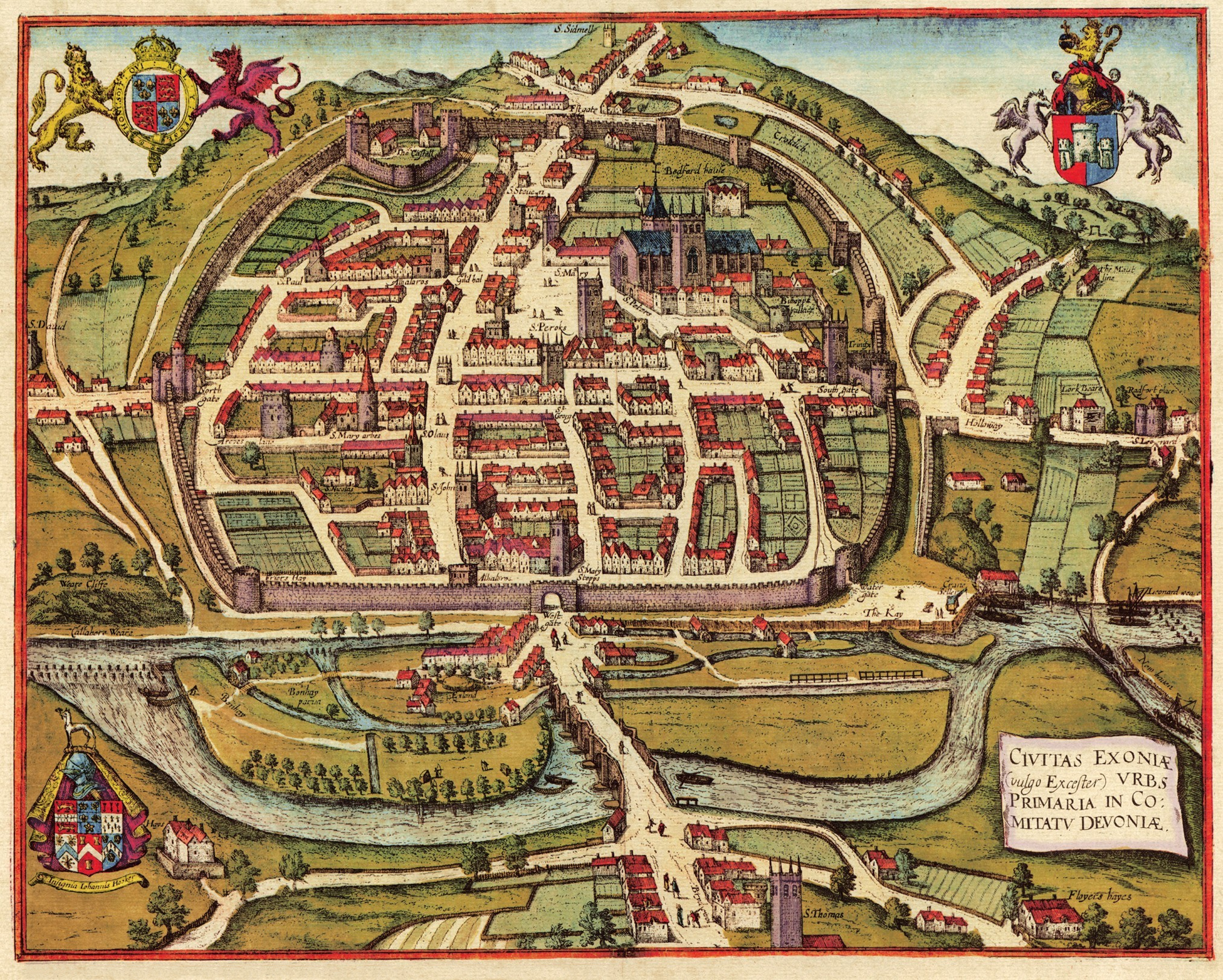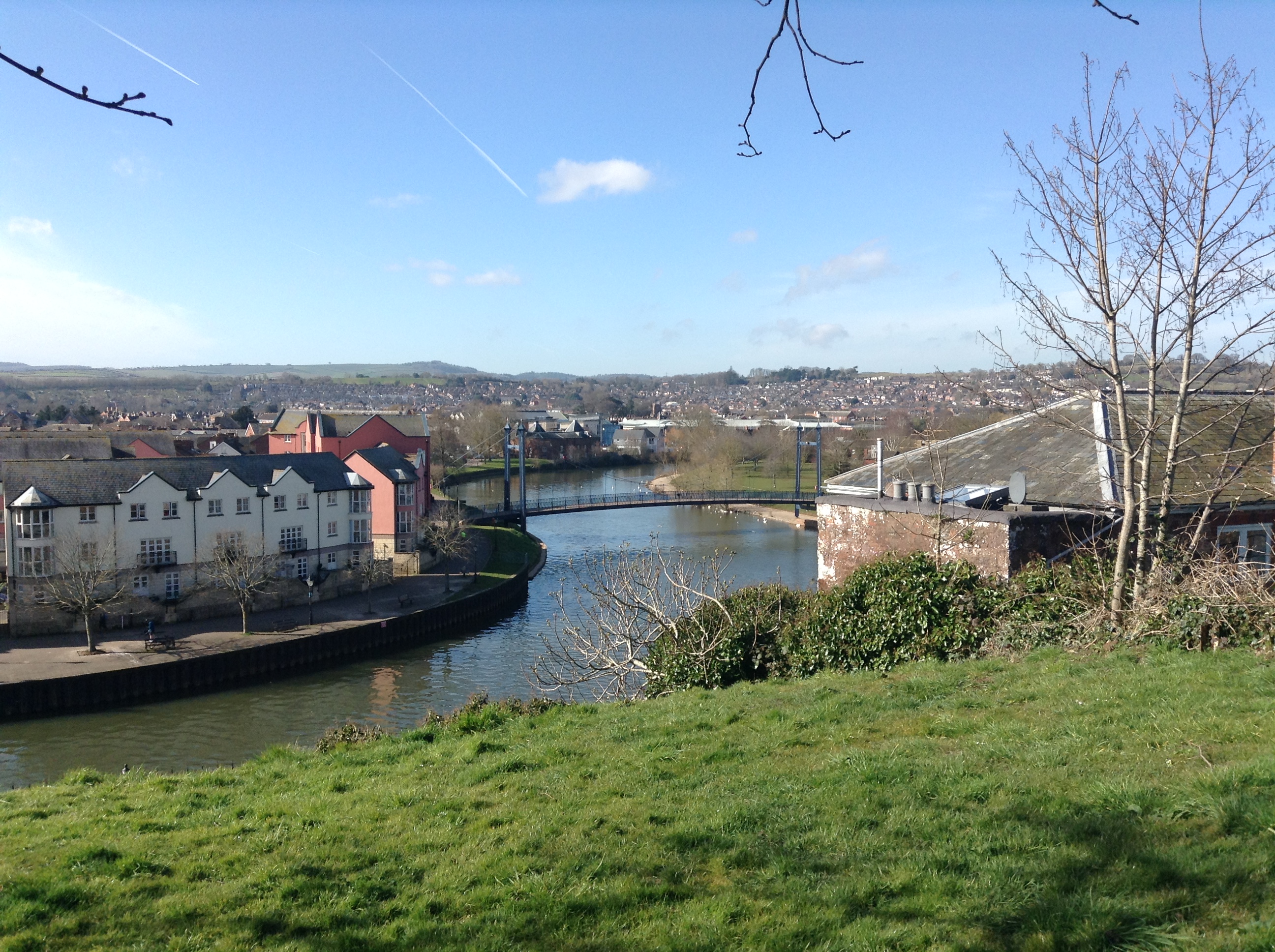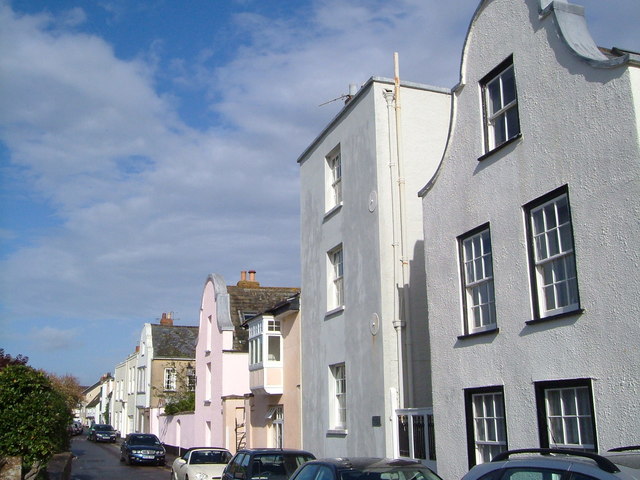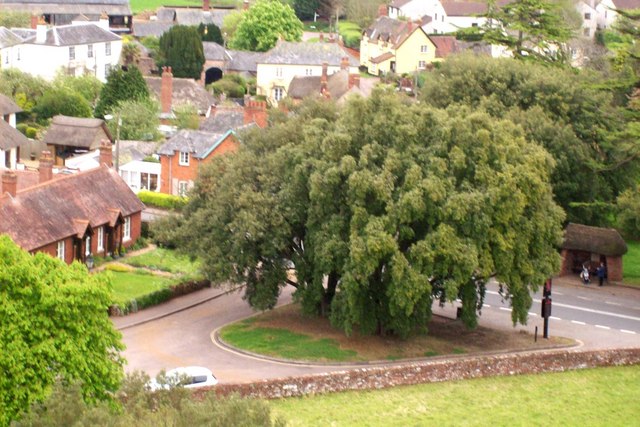|
Exeter Tram System
Tramways in Exeter were operated between 1882 and 1931. The first horse-drawn trams were operated by the Exeter Tramway Company but in 1904 the Exeter Corporation took over. They closed the old network and replaced it with a new one powered by electricity. History Horse era An Act of Parliament was made in 1881 ''"for making tramways in the county of Devon to be called Exeter Tramways"''. Under this the council gave 21 years of running powers over Exeter's streets. The rights were assigned to a commercial company, The Exeter Tramway Company. This company was launched in 1881 when its prospectus was published in The Times. The directors were William Leigh Bernard, W. Standing, and WM Wood. The Manager and Inspector was SH Culley and the Secretary was J. Lord. The Exeter Tramway Company was formed at a meeting at the Black Horse Inn on Longbrook Street on 15 November 1881. Construction of the tramway began on 3 January 1882 and it started horse-drawn tramway services in Exeter ... [...More Info...] [...Related Items...] OR: [Wikipedia] [Google] [Baidu] |
Exe Bridge
The Old Exe Bridge is a ruined medieval arch bridge in Exeter in south west England. Construction of the bridge began in 1190, and was completed by 1214. The bridge is the oldest surviving bridge of its size in England and the oldest bridge in Britain with a chapel still on it. It replaced several rudimentary crossings which had been in use sporadically since Roman times. The project was the idea of Nicholas and Walter Gervase, father and son and influential local merchants, who travelled the country to raise funds. No known records survive of the bridge's builders. The result was a bridge at least long, which probably had 17 or 18 arches, carrying the road diagonally from the west gate of the city wall across the River Exe and its wide, marshy flood plain. St Edmund's Church, the bridge chapel, was built into the bridge at the time of its construction, and St Thomas's Church was built on the riverbank at about the same time. The Exe Bridge is unusual among British medieval ... [...More Info...] [...Related Items...] OR: [Wikipedia] [Google] [Baidu] |
Exeter Guildhall
Exeter Guildhall on the High Street of Exeter, Devon, England has been the centre of civic government for the city for at least 600 years. Much of the fabric of the building is medieval, though the elaborate frontage was added in the 1590s and the interior was extensively restored in the 19th century. It is a Grade I listed building. History Early history It is certain that the hall has been on its present site since the 14th century, and most probably since the second half of the 12th century. It is also known that there was a guild in Exeter by 1000 AD whose hall was most likely here too.Hoskins 2004, p.24. On this basis it has been claimed to be the oldest municipal building in England still in use. The current building was constructed between 1468 and 1470. It was refaced between 1593 and 1596 at a cost of £789Hoskins 2004, p.70. in an ornate Italian style that was described by Nikolaus Pevsner as being "as picturesque as it is barbarous". The portico that juts o ... [...More Info...] [...Related Items...] OR: [Wikipedia] [Google] [Baidu] |
River Exe
The River Exe ( ) in England rises at Exe Head, near the village of Simonsbath, on Exmoor in Somerset, from the Bristol Channel coast, but flows more or less directly due south, so that most of its length lies in Devon. It flows for 60 miles (96 km) and reaches the sea at a substantial ria, the Exe Estuary, on the south (English Channel) coast of Devon. Historically, its lowest bridging point was the Old Exe Bridge in Exeter, the largest settlement on the river, but there is now a viaduct for the M5 motorway about south of the city centre. Topography The river's name derives from *Uɨsk, a Common Brittonic root meaning "abounding in fish", and a cognate of both the Irish ''iasc'', meaning "fish", and ''pysg'', the plural word for "fish" in Welsh. The same root separately developed into the English Axe and Esk, the Welsh Usk, though not, as some have claimed, the word '' whisky'', this latter being from the Classical Irish/Gaelic "water" (the fuller phrase be ... [...More Info...] [...Related Items...] OR: [Wikipedia] [Google] [Baidu] |
Exeter 1930 Tram
Exeter () is a city in Devon, South West England. It is situated on the River Exe, approximately northeast of Plymouth and southwest of Bristol. In Roman Britain, Exeter was established as the base of Legio II Augusta under the personal command of Vespasian. Exeter became a religious centre in the Middle Ages. Exeter Cathedral, founded in the mid 11th century, became Anglicanism, Anglican in the 16th-century English Reformation. Exeter became an affluent centre for the wool trade, although by the First World War the city was in decline. After the Second World War, much of the city centre was rebuilt and is now a centre for education, business and tourism in Devon and Cornwall. It is home to two of the constituent campuses of the University of Exeter: Streatham Campus, Streatham and St Luke's Campus, St Luke's. The administrative area of Exeter has the status of a non-metropolitan district under the administration of the County Council. It is the county town of Devon and home ... [...More Info...] [...Related Items...] OR: [Wikipedia] [Google] [Baidu] |
Topsham, Devon
Topsham (, also ) is a town in Devon, England, located on the east side of the River Exe, immediately north of its confluence with the River Clyst and the former's estuary, between Exeter and Exmouth. Topsham is a historic port and was designated a town by a 1300 royal charter granted by Edward I; it was formally amalgamated into the City of Exeter in 1966. The town is served by Topsham railway station, about midway on the branch line from Exeter Central to Exmouth, now called the Avocet Line; 2011 saw the 150th anniversary of the railway coming to Topsham. The electoral ward of Topsham had a population recorded at 5,519 in the 2011 census, though this ward extends further northwest and includes the east half of Countess Wear as well as the new suburb of Newcourt. History The native Celtic settlement of Topsham became the port of the Roman city of Isca Dumnoniorum (Exeter) in the first century AD, and continued to serve it until the Roman occupation of southern Britain ... [...More Info...] [...Related Items...] OR: [Wikipedia] [Google] [Baidu] |
Broadclyst
Broadclyst is a village and civil parish in the East Devon local government district. It lies approximately 5 miles northeast of the city of Exeter, Devon, England, on the B3181. In 2001 its population was 2,830, reducing at the 2011 Census to 1,467. An electoral ward with the same name exists whose population at the above census was 4,842. Parish church Its church is 15th century, with an ancient cross. It has many battlements, pinnacles and gargoyles. According to the Anglo-Saxon Chronicle, in the year 1001, the manor at Broad Clyst was burned down by Danish invaders. Communications On 16 October 1975, the nearby M5 opened and the A38 road that ran through the village became quiet, later being reclassified B3181. Broadclyst railway station was opened in 1860 by the London and South Western Railway on its London Waterloo to Exeter line. It closed in 1966 but some of the buildings remain. Amenities and historic buildings Killerton House, a National Trust property, is clo ... [...More Info...] [...Related Items...] OR: [Wikipedia] [Google] [Baidu] |
Pinhoe
Pinhoe is a former village, manor and ecclesiastical parish, now a suburb on the north eastern outskirts of the City of Exeter in the English county of Devon. The 2001 census recorded a population of 6,108 people resident within Pinhoe Ward, one of 18 wards comprising the City of Exeter. The population increased to 6,454 at the 2011 Census. History Historically Pinhoe formed part of Wonford Hundred. It falls within Aylesbeare Deanery for ecclesiastical purposes. A parish history file is held in Pinhoe Library. Pinhoe is mentioned as 'Pinnoch' in the Great Domesday Book compiled in 1086. There have been several significant archaeological finds in the village over the past 100 years. These have included Roman coins and what is known as 'the Pinhoe hoard' of Bronze Age metalwork found in 1999. In 1001, the Danes, having landed at Exmouth, marched to Exeter, which they besieged, but unable to take the settlement, they laid waste the surrounding country. At Pinhoe, they were ... [...More Info...] [...Related Items...] OR: [Wikipedia] [Google] [Baidu] |
Kennford
Kennford is a village situated in the Teignbridge district of Devon, England. Kennford is to the south of Exeter in the civil parish of Kenn; it is situated in one of the country's main tourist areas. The village became prominent in the 1970s as the location of a new service station on the A38 Devon Expressway between Exeter and Plymouth, near the southern terminus of the then new M5 motorway. This service area is a popular stopping place for tourists on their way to South Devon and Cornwall. Close to the village is a caravan and camping Camping is an outdoor activity involving overnight stays away from home, either without shelter or using basic shelter such as a tent, or a recreational vehicle. Typically, participants leave developed areas to spend time outdoors in more na ... park. The entertainer, Danny la Rue, was largely brought up in Kennford (from the age of 6). References External links {{authority control Villages in Devon ... [...More Info...] [...Related Items...] OR: [Wikipedia] [Google] [Baidu] |
Alphington, Devon
Alphington is a former manor and village, now a suburb of the City of Exeter in Devon. The ward of Alphington has a population of 8,250 according to the 2001 census, making it the third largest in Exeter, with the village itself accounting for about a quarter of this figure. The ward population increased to 8,682 at the 2011 census. It is surrounded on two sides by countryside, with the Marsh Barton trading estate to the east and Exeter City to the north. The Alphin Brook passes around the Northern edge of Alphington. Alphington is on the Southwestern side of Exeter. Notable buildings St Michael and All Angels parish church Most of the fabric of the parish church of St Michael and All Angels originates from the 15th century, including the rood-screen. The north aisle screen is of a different style and design and possibly comes from another church, whilst the screen at the base of the tower was put together from the remains of the 1625 Jacobean gallery, demolished in 1 ... [...More Info...] [...Related Items...] OR: [Wikipedia] [Google] [Baidu] |
Royal Albert Memorial Museum
Royal Albert Memorial Museum & Art Gallery (RAMM) is a museum and art gallery in Exeter, Devon, the largest in the city. It holds significant and diverse collections in areas such as zoology, anthropology, fine art, local and overseas archaeology, and geology. Altogether the museum holds over one million objects, of which a small percentage is on permanent public display. It is a 'Major Partner Museum' (MPM) under the Arts Council England administered programme of strategic investment, which means RAMM receives funding (2012–15) to develop its services. RAMM receives this funding in partnership with Plymouth City Museum & Art Gallery. Previously they were described as 'hub museums' under the 'Renaissance' Programme for regional museums which operated between 2002–11 and funded by the now defunct Museums Libraries & Archives Council (MLA). Founded in 1868, the museum is housed in a Gothic Revival building of local New Red Sandstone that has undergone several extensions duri ... [...More Info...] [...Related Items...] OR: [Wikipedia] [Google] [Baidu] |
University Of Exeter
, mottoeng = "We Follow the Light" , established = 1838 - St Luke's College1855 - Exeter School of Art1863 - Exeter School of Science 1955 - University of Exeter (received royal charter) , type = Public , endowment = £49.5 million , budget = £503.1 million , chancellor = Sir Michael Barber , vice_chancellor = Lisa Roberts , head_label = Visitor , head = Charles III '' ex officio'' , city = Exeter, Devon Penryn, Cornwall , country = England , coor = , administrative_staff = 2,647 , faculty = 3,145 (2020) , students = 23,613 (2018/19) , undergrad = 18,932 (2018/19) , postgrad = 4,681 (2018/19) , colours = Green and white , doctoral = , campus = Streatham – Penryn – St Luke's – , affiliations ... [...More Info...] [...Related Items...] OR: [Wikipedia] [Google] [Baidu] |
Exeter Tram System Map
Exeter () is a city in Devon, South West England. It is situated on the River Exe, approximately northeast of Plymouth and southwest of Bristol. In Roman Britain, Exeter was established as the base of Legio II Augusta under the personal command of Vespasian. Exeter became a religious centre in the Middle Ages. Exeter Cathedral, founded in the mid 11th century, became Anglicanism, Anglican in the 16th-century English Reformation. Exeter became an affluent centre for the wool trade, although by the First World War the city was in decline. After the Second World War, much of the city centre was rebuilt and is now a centre for education, business and tourism in Devon and Cornwall. It is home to two of the constituent campuses of the University of Exeter: Streatham Campus, Streatham and St Luke's Campus, St Luke's. The administrative area of Exeter has the status of a non-metropolitan district under the administration of the County Council. It is the county town of Devon and home ... [...More Info...] [...Related Items...] OR: [Wikipedia] [Google] [Baidu] |









